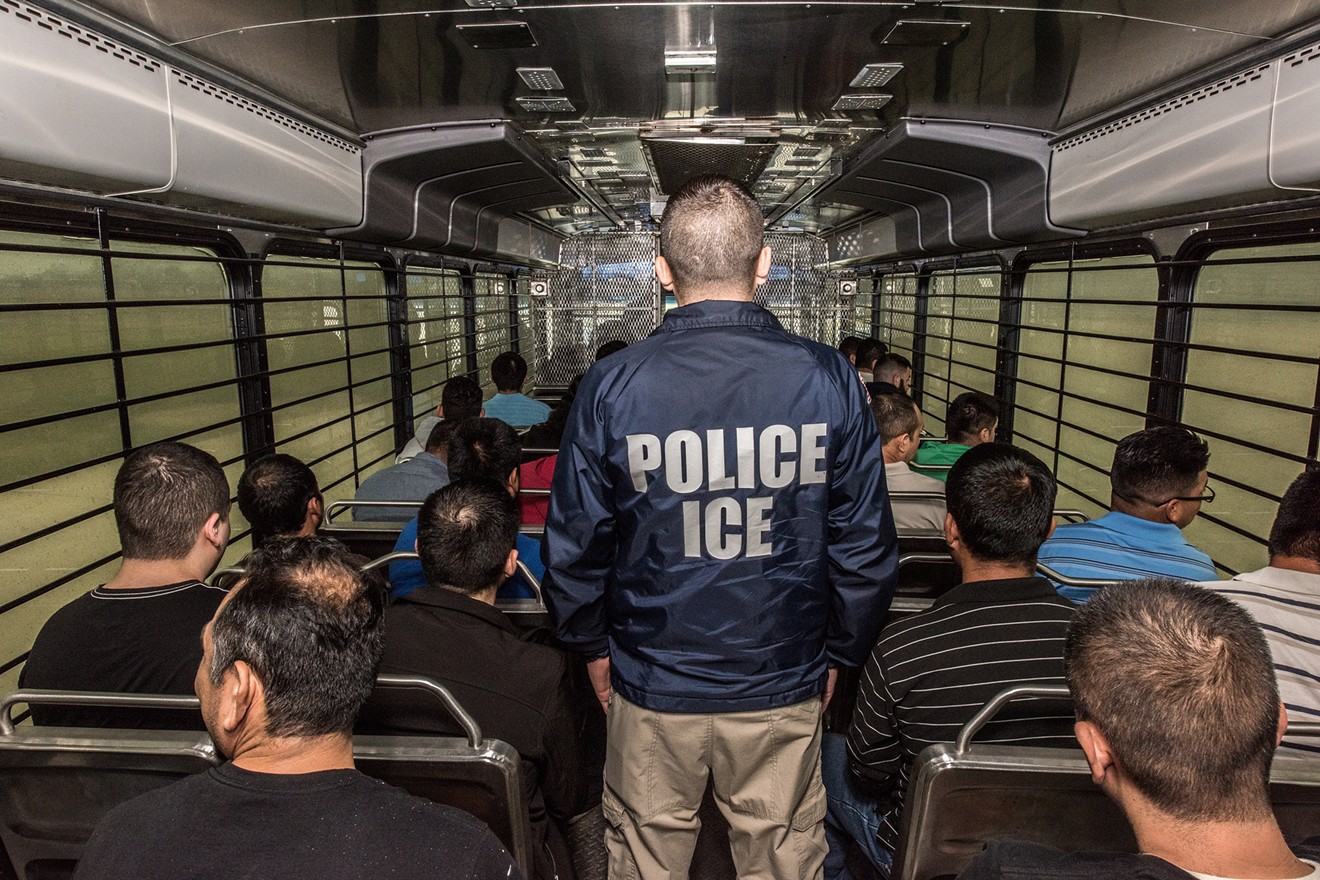With executive orders and a pledge to hire more officers — not to mention his trademark anti-immigrant invective — President Trump has unleashed Immigration and Customs Enforcement. It's starting to show in the number of arrests and deportations. Based on the 2017 data released by the agency, ICE arrests and removals ramped up nationwide last year, including in the Arizona jurisdiction.
However, the increase in ICE activity here wasn't as dramatic as it was in other regions, such as Texas and Florida.
According to research compiled by Pew, ICE arrested 143,470 people in fiscal year 2017, a 30 percent increase from the previous year. In the Phoenix area, ICE arrests rose by 20 percent. There were over 6,450 arrests here in fiscal 2017.
ICE jurisdictions often encompass huge swaths of the country. ICE's Phoenix office, for example, covers the whole state of Arizona as its area of responsibility.
The biggest jump in ICE arrests was in Florida, where 6,192 people were arrested, a 76 percent increase from 2016. While you might think that states on the U.S.-Mexico border would see an ICE crackdown under Trump, the other regions that experienced a spike in ICE arrests are counterintuitive. Dallas and Oklahoma had a 71 percent increase, Louisiana and its neighbors saw a 54 percent jump, and the Atlanta region spiked by 53 percent.
Meanwhile, there were small increases in arrests in San Antonio and Houston.
As you can see from the table above, Phoenix is among the 10 areas with significant ICE activity, but the agency is arresting far more people in Texas and the Gulf Coast states under Trump. In terms of deportations, however, Phoenix is pretty much even with the El Paso and San Diego ICE jurisdictions.
Although it's tempting to tie everything back to Trump, an enhanced deportation regime is something the U.S. has experienced many times. During the 1930s, workplace raids on Mexican-Americans took place across the country, when officials deported up to 2 million people during the Great Depression "repatriation" campaigns. Many of people who were deported were U.S. citizens.
More recently, deportations surged during President Obama's first term. There were a staggering 297,000 ICE arrests in 2009 alone, and the U.S. deported a record-breaking 419,000 people in 2012, when Obama was reelected.
Also important to note is a massive immigration court backlog, which ties up these deportation orders in court. The backlog creates a lag period, sometimes lasting years, between when someone is arrested by ICE and when they are deported.
As for the numbers, activists and immigration attorneys will tell you that agency tactics have also shifted to become aggressive and less constrained by priorities, or basic humanity — if they ever were. See the recent detention of high-profile immigrant-rights activist Ravi Ragbir in New York City, or the collusion between Motel 6 and ICE, or the Border Patrol's arrest of a 10-year-old girl at a hospital while she was recovering from surgery.
Whether ICE's vicious assault on immigrants under the Trump administration will add up to another record-breaking period of deportations remains to be seen. But you can be sure that as they split families apart and destroy lives, the agency off the leash will brag and call it a success.
[
{
"name": "Air - MediumRectangle - Inline Content - Mobile Display Size",
"component": "18478561",
"insertPoint": "2",
"requiredCountToDisplay": "2"
},{
"name": "Editor Picks",
"component": "16759093",
"insertPoint": "4",
"requiredCountToDisplay": "1"
},{
"name": "Inline Links",
"component": "17980324",
"insertPoint": "8th",
"startingPoint": 8,
"requiredCountToDisplay": "7",
"maxInsertions": 25
},{
"name": "Air - MediumRectangle - Combo - Inline Content",
"component": "16759092",
"insertPoint": "8th",
"startingPoint": 8,
"requiredCountToDisplay": "7",
"maxInsertions": 25
},{
"name": "Inline Links",
"component": "17980324",
"insertPoint": "8th",
"startingPoint": 12,
"requiredCountToDisplay": "11",
"maxInsertions": 24
},{
"name": "Air - Leaderboard Tower - Combo - Inline Content",
"component": "16759094",
"insertPoint": "8th",
"startingPoint": 12,
"requiredCountToDisplay": "11",
"maxInsertions": 24
}
]














